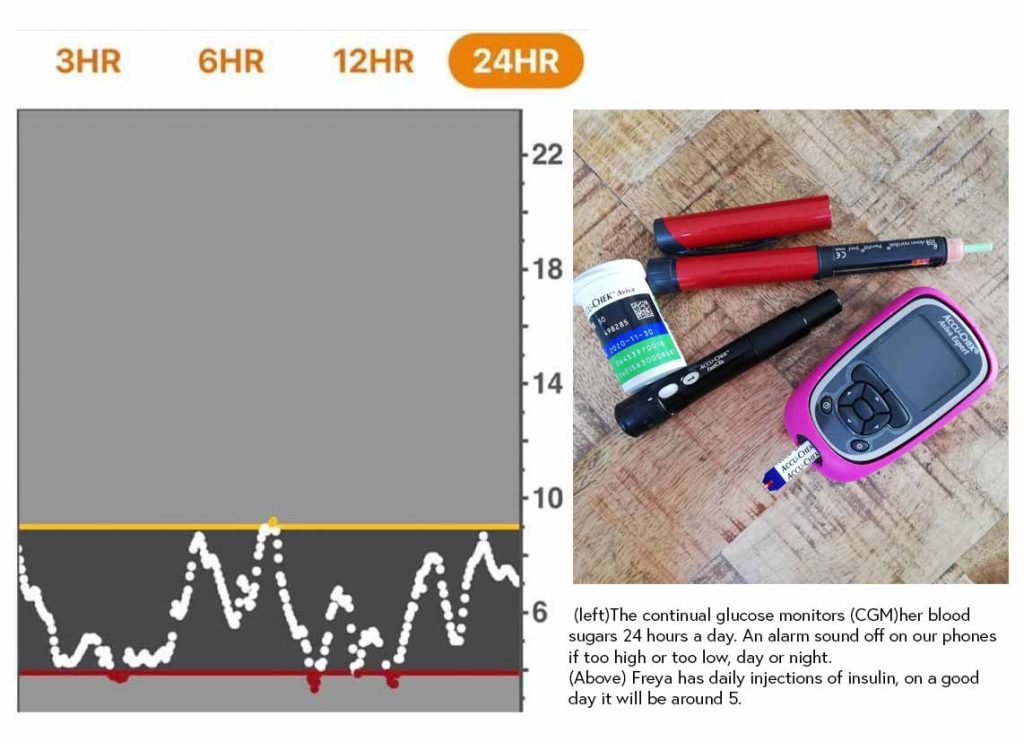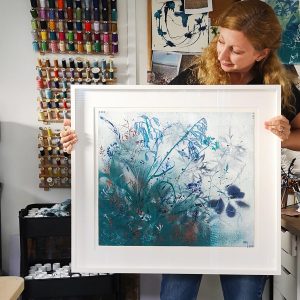Before my daughter showed me otherwise, I thought I knew the importance of self-care. I knew that painting could help me cope with bereavement, and as a family we got out into nature whenever we needed to reduce stress and raise our spirits. I was proud that we had found positive techniques that could help us through the difficult days.
But things suddenly changed.
Our daughter Freya has type-1 diabetes. This lifelong condition means that the immune system destroys the insulin-producing cells in the pancreas. Type 1 diabetes is not linked to diet, and it has no cure. We had been carefully managing her blood sugar levels through insulin injections each time she ate or when blood sugars were too high.
But these levels began to rise uncontrollably. Even the paediatric diabetes team couldn’t identify the cause. I remember the long nights, getting up every few hours for injections which never seemed to work, as though I was injecting water, not insulin. I felt helpless and frustrated.

Freya was, in every other way, a typical eight-year-old girl, with all the worries and concerns you would expect. This was one way I could help her. We talked through her troubles and, as she began to understand how she’d been feeling, her anxiety settled down. And, like magic, so did her blood sugar levels.
The change was dramatic, to the point where we had to urgently reduce her insulin doses. It couldn’t have been clearer – Freya’s anxiety had caused the high blood sugars.
The surprise was not that her stress levels could affect her physical health – we all know that stress isn’t good for you, and there is a clear link between the release of adrenalin and the production of glucose.
What amazed me was the extent to which relatively low-level anxiety can – and does – have an impact. Freya’s worries had been so ‘normal’, so seemingly inconsequential, that the doctors had not even considered them as a possible cause.

(Shoreham Beach in June)
For most of us, the effects of underlying stress are imperceptible. But Freya’s blood sugar levels were like a barometer for her state of mind, and they taught us, as a family, never to ignore our emotions. We tune in, regularly.
Our techniques for bringing peace are no longer seen as something to turn to when the going gets tough; they are now integral to our daily lives, just like eating and sleeping. Our goal is to prevent stress, not just to manage it.
My paintings – which draw on the feelings, the atmosphere, the rich colours, patterns and textures of our walks – are my way of sharing the calming effects of nature with others.
If you know where your happy place is, don’t wait for your body to tell you to go there.

This blog is adapted from my article published on www.thriveglobal.com







